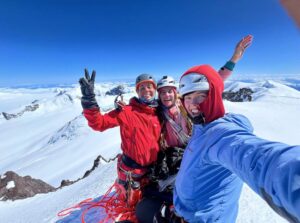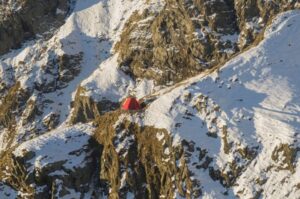Ironic, isn’t it? Steve Irwin, the Crocodile Hunter — the man who became famous by wrestling the biggest reptiles on earth — died from a stingray barb through his heart.

Steve Irwin in his comfort zone. Photo: Australia Zoo
In Irwin’s case, flirting with these reptiles appeared to be a safe, if quirky, exercise. Although he wasn’t exactly a serious type of guy, he dedicated his life to reptiles. He came by his love of herpetology honestly. His parents owned a reptile and fauna park and he grew up around crocodiles. At age 9, he wrestled his first one, and continued to entrance television audiences with this signature stunt throughout his life.
The Port Douglas area of Queensland, where Irwin eventually died in the freak stingray accident, is better known for its lethal crocs than for its stingrays. Thirty-five crocodile attacks occurred in the North Queensland area between 1985 and 2018, 11 of which were fatal.
In 2015, the BBC enlisted expert Simon Pooley to study patterns of crocodile attacks on humans. Poole had spent his life in Africa, where there are more known crocodile fatalities than in Australia, media coverage to the contrary. While Poole’s study focused on crocodiles, his research appears on a “crocodilian” website. This more general term includes not only crocodiles, but also alligators, caimans and gharial.
Pooley identified trends that could be helpful to those venturing into crocodile territory: First, crocodiles are opportunistic predators. When they’re hungry, they’ll find a meal and it won’t matter whether that meal is a human or an animal, or if it’s in water or on land.
Between 1984 and 2014, 71 of the 96 attacks in South Africa and Swaziland occurred in either a river or stream. Most happened during the wet and hot season; virtually none during the dry season.

Reference: Pooley’s data from Worldwide Crocodilian Attack Database
In Pooley’s studies, the largest percentage of victims were males between the ages of 10 and 19. It made sense: boys that age were more likely to be swimming for longer periods of time than elderly and were perhaps less risk adverse than girls of the same age.
Most of those attacked were fishing or bathing at the time. By comparison, crossing waterways or boating presented few or none. Longer periods in one section of water lets the crocodile observe its potential meal before striking. This sizing up may not be possible when humans dip into or out of the water, such as during a brief crossing.
According to Discover Wildlife, a crocodile can outrun a human on land over short distance. They can cover 12 to 14kph using three styles of locomotion: belly crawl, high walk and gallop. Crocodiles also have sophisticated night vision, so they are just as dangerous at night.

Pooley’s data from the interestingly named Worldwide Crocodilian Attack Database
In the case of 35-year-old Hendri Coetzee, a celebrated whitewater kayaker, the crocodile who ripped him from his kayak did not discriminate based on age. Coetzee, Chris Korbulic and Ben Stookesberry went to the Democratic Republic of the Congo to film whitewater kayaking on the Congo and White Nile Rivers, as well as make a first descent of the Lukuga River.
Coetzee was from Pretoria and familiar with the hazards of kayaking in Africa. Under his guidance, Korbulic and Stookesberry spent weeks practicing anti-croc, anti-hippo skills such as nose-tapping. These skills were of no help to Coetzee, who was ripped from his boat in seconds by a predatory croc, never to be seen again.
“In my periphery, I saw the crocodile come out of the water, and he got onto Hendri’s left side,” recalled Korbulic. “The crocodile just pulled him right underwater.”

Hendri Coetzee.
There are an estimated 1,000 fatalities a year worldwide from crocodiles. Many occur in rural Africa, and we hear little about them. But the one on Val Plumwood in 1985 is one of the best known. It is also one of those with a happy ending.
Plumwood was 46 years old at the time. She had been a prominent environmentalist and eco-feminist in the 1970s, but her determination to survive serves as part of her legacy. She was paddling her canoe in Kakadu National Park, Australia, when a pair of eyes developed on what had previously seemed to be a log just ahead of her. The crocodile lashed its tail at her canoe, either to tip it or to knock her from it.
She paddled away furiously, with the crocodile in pursuit. As she passed under a tree, she tried to vault into some low branches to escape, but the crocodile launched itself out of the water and grabbed her before she could lift her feet to safety. It dragged her underwater and gave her a death roll — its technique for drowning prey. It let her go briefly to adjust its grip, then did two more death rolls. Somehow, through sheer will or the animal’s imperfect grip, she managed to escape and scramble up a bank. Despite severe injuries — one leg was exposed to the bone — she walked and crawled three kilometres to a ranger station.
Plumwood later wrote an article about her experience. Called Human Vulnerability and the Experience of Being Prey, it was both reflective and hair-raising. It is certainly one of the more philosophical accounts of surviving a wild animal attack. The fact that Plumwood herself was a vegetarian added some ironic salt to the tale.

The crocodile dragged Val Plumwood out of a tree. Illustration: Aisling Magazine
While Africa and Australia are not the only continents where fatal crocodile attacks occur, these have the densest crocodile populations. The map below details the number of crocodilian species on each continent.

Species distribution map, courtesy of Crocodilian.com
Minimizing the chances of an attack:
1. Know your seasons
Attacks in Africa happened seasonally. Every attack studied occurred when the minimum temperature was higher than usual. Avoid water during the dry season or unseasonably warm weather. When you can’t see a crocodile, it doesn’t mean to say it can’t see you. They can stay underwater for up to three hours.
2. Move quickly through the water
Most of the attacks that Pooley cites happened during longer periods in the water. Obviously, swimming is not a great idea in crocodile habitat, and bathing is safer if done outside murky rivers by pouring water over you rather than sitting in the water itself. Forty percent of attacks happened in water and 74 percent were in rivers or streams. It is also known that splashing draws the attention of crocodiles; it doesn’t scare them off.
So what do you do if you find yourself in the clutches of a crocodile?
1. Poke fingers in eyes or hit on the nose
These areas are more sensitive in crocodiles and might trigger a release response. In any case, it’s worth a try.
2. Use something to induce a gag reflex
While one part of your body may be in the crocodile’s jaw, try to find anything — a branch, a rock — to stuff inside too. This could trigger a gag reflex, allowing your body to be released.
3. Do as Val Plumwood did
Plumwood lived to philosophize about her experience thanks to a primal fighting spirit. The moral of her story is, don’t give up.
4. Sacrifice a Limb to Save the Rest of You
A zoo keeper once lost an arm but survived because he pleaded for a coworker to pull him to safety, even though his arm was locked in a crocodile’s jaw. It was one of those Between a Rock and a Hard Place choices, but despite the panic and adrenalin of the moment, he realized that it was better to lose an appendage than his life.
Plumwood could have traveled through Kakadu during a different season, and who knows whether more caution would have allowed Coetzee to survive. But the truth is, we cohabit this planet with some predators which don’t discriminate between humans and other prey, so it’s up to us to be the observant ones.






